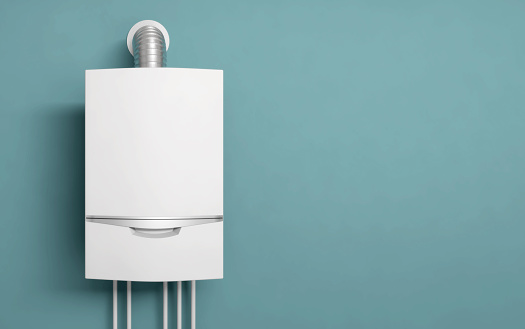Water Heating Can Be a Tankless Task
Traditional water heaters, even if they are running right, have built-in inefficiencies. You would never keep a pot of boiling water on the stove 24/7 to make your coffee or tea each morning. That’s sort of what’s happening in your water heater tank—whether you’re at work, or away for the weekend, your water heater is burning energy all day, every day to keep a big “pot” of water ready for the next time you want to use it. Going tankless addresses this wastefulness by only heating water on demand. It is also a much smaller unit, saving on space. This is a big deal since water heating is the second most expensive energy guzzler in most households.
How It Works

When you turn the handle for hot water in a traditional system, pre-heated hot water travels through pipes to the tap. In a tankless system, cold water is carried to the unit and is circulated through a series of coils called a heat exchanger and sent directly to the faucet. The system only heats the water that you need—you save on your electric or gas bill and reduce your carbon footprint!
Gas Versus Electric
Electric on-demand tankless systems produce lower flow rates than gas-fired units due to lower BTU production. The most powerful home electric system produces 125,000 BTU, while outputs from gas systems range from 120,000 to 199,000 BTU. Electric water heaters are more compact and can be complicated to install, requiring (3) 50 AMP double pole breakers and circuits run to supply the power. Your home’s electrical panel and service AMPs must be large enough to supply the additional 150A required to run the electric tankless water heater. Most homes only have 200A service. Gas tankless heaters are larger and will require installation of additional gas lines and PVC venting (exterior tankless only need gas and water lines). Gas water heaters are more efficient than electric, and the price to install is about the same. There are more restrictions for installing electric tankless than gas; however, because electric tankless is limited to the power supplied to your home.
How Much Is Not Enough?
Typically, tankless units provide hot water at a rate of two to five gallons per minute, depending on the model and temperature of the groundwater. For simultaneous demand for showering, dishwashing and clothes washing, be sure that the new system you purchase will cover your needs. Tankless water heaters can cost significantly more to install compared to an electric tank water heater, but it will also produce energy savings that may result in the unit paying for itself in 10-12 years or less. Also, they will last longer—warranties for most tankless systems are for 20 years compared to 8-10 years for tank systems. For more information about installing a tankless water heater system in your home, call PECO, your home service heroes. We’re a family-owned business and take great pride in offering high-quality home repair with even higher quality attention to our customer’s needs. We’re available 24/7 and service Oconee, Pickens, and North Anderson counties. As well as being licensed plumbing contractors, we also install, maintain and fix heating and cooling systems. We can fix or build anything that moves gas or water through your house and we even repair and remodel homes, including doors, minor drywall, and painting. If you’re thinking of going tankless, call the experts at PECO today at 864-639-2424 or request an appointment online.



